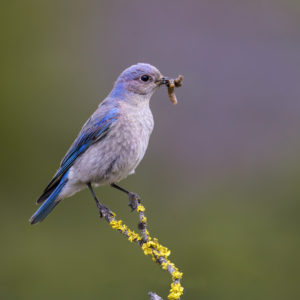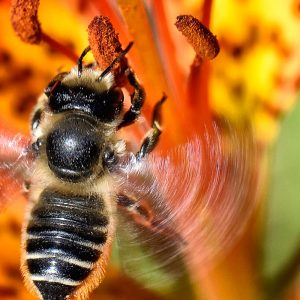To Bee, or Not to Bee
 This blog is written by Nature Canada guest blogger Tina-Louise Rossit.
This blog is written by Nature Canada guest blogger Tina-Louise Rossit.
World Honey Bee day is not just a day to support our love of honey and bee-pollinated foods…it’s to give awareness of today’s bee crisis and what that means for the rest of us. Read on to find out a little more about these amazing critters and why you should bee grateful for them!
From A to BEE
Bees are tiny insects with 6 legs and 4 wings, and represent a whole lot of species. In fact, honey bees are only a fraction of bee species. Furthermore, the commercial honey bee, or species used to pollinate human food crops, represent even a smaller fraction. However, all bees are social insects relying on a social hierarchy system within a beehive.
They are divided into castes with different responsibilities. These are; the queen, male drones, female workers and larvae. The female workers are divided into three more castes in relation to their life stage. A female begins as a nurse, tending to the newly hatched larvae. Then she becomes a guard and food handler and tends to pollen collected, honey-making, building new cells and repairing old ones. And her last stage will be outside, as part of the team to gather nectar and pollen. If there can be an award for hardest working insect, it’s the honey bee since the female workers will literally wear out they wings by the end of their life!
Explanation of Pollination
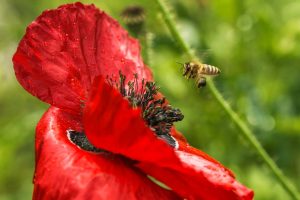
A bee and poppy, captured by Sandy Nelson.
Pollination is a symbiotic relationship between flowering plants and animals. Flowering plants, scientifically called angiosperms, reproduce sexually, meaning they have male and female parts. The pollen grains contain the sperm, and the pistils contain the ovaries. Once fertilization occurs, seed development occurs, resulting with the fruit. But since plants can’t physically move the pollen themselves, that’s where pollinators come in.
For bees, they travel from flower to flower to collect nectar and simultaneously get pollen attached to their bodies. The bee moves to the next flower and pollen grains drop down. The pollens fall into the pistils and fertilize the eggs thanks to the bee. In return, honey bees use the collected nectar for everything they need to survive. Bee food, honey, and the hive itself, all stem from nectar as the secret ingredient.
This is why pollination is symbiotic because it is crucial to both parties. Although mammals, birds, bats and other insects have pollinating species, evolution is pretty specific sometimes, and some plants can only be pollinated by specific animals. The honey bees pollinate a lot of plants for human foods. One third to be exact. One bite out of three fruits and vegetables we love to eat, needs bees to survive.
Now imagine these honey bees disappear. Here’s a list just to name a few plants that wouldn’t grow so much; apples, blueberries, blackberries, raspberries, coffee, cherries, cranberries, almonds, coffee, zucchini, grapes, avocado, and was coffee already mentioned? And if you put honey in your cup of coffee, well that’s a double whammy. Now while we’re still imagining, think about what the earth would look like without a third of its plants. It’s not a lovely sight.
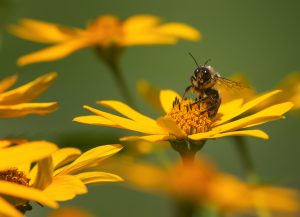
A bee pollinating flowers, captured by Ilana C Block.
The crisis!
Over the past decade, beekeepers started noticing a very weird phenomenon with their beehives. Their hives were found with all dead bees. Research began to solve the mystery and discovered that these bees suffered from Colony Collapse Disorder caused by toxins. Where did the bees get toxins? If you guessed from humans, you’re unfortunately right. The use of pesticides is an iffy topic. We see the value to protect food plants from harmful bugs and pests, but we don’t need pesticides full of harmful chemicals that kill everything else.
For example, we don’t need neonics. Neonicotinoids, or neonics for shorts, are neurotoxins still being used today in pesticides. Once a honey bee consumes it, it affects the immune system, impair memory and learning, disorientate, increase deficiently in larval development, and interferes with gut flora leading to malnutrition. Since all members of a hive eats the same thing from the same source, adding neonics to the recipe will result in Colony Collapse Disorder.
So let’s recap, shall we? We have increased use of harmful chemicals in our farmer’s pesticides, which leads to decrease the number of honey bees, which leads to decrease one third of our food, which will lead to a bunch of new unfortunate factors.
I bee-lieve you, now what can I do?
If one bee can do so much, one voice (you!) can also do a lot. The first thing you did was read this article! The first step is always awareness, people need to know what’s going on and how it will impact their lives. Second step is to get more info, good info, that is! Follow sites like Nature Canada that put nature first, to find out and learn more about any environmental topic. Step three, take action! Whether it’s a donation, or a share on social media, or volunteering, everything helps. Two awesome ideas to help honey bees out right away, is to plant more native flowers and buy honey products from your local farms! Two simple acts that will go a long way!
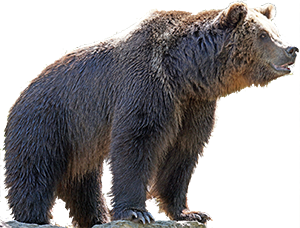
Join the Movement!Sign up to learn how you can protect the nature you love. |
Bibliography
https://www.beesmatter.ca/
http://www.ontariohoney.ca/
http://www.honeybeecentre.com
https://en.wikipedia.org/wiki/Honey_bee
http://bees.caes.uga.edu/bees-beekeeping-pollination/getting-started-topics/getting-started-honey-bee-biology.html

